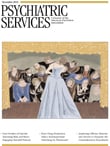Room
Emma Donoghue takes on quite a challenge when she restricts herself in the first half of Room to having all action take place in an 11-square-foot room occupied by two characters, a mother and her son. Other than cameo appearances by their captor, that's it for 137 pages. But in the second half of the book, reintegrating the mother and son into "society" after their long captivity proves to be more challenging, and here Donoghue doesn't do nearly as well.
As if those aren't enough challenges for an author, the book is narrated from the perspective of five-year-old Jack. His mother (whose name is rarely used because he calls her Ma) is 26 years old, and she has been in the room since she was 19, after being kidnapped from her college campus. All manner of detail emerges about Ma in the second half: she was adopted at six weeks, she had an abortion at 18, and she had a prior pregnancy by her captor—the infant a girl who died at birth, strangulated by the umbilical cord. The relevancy of these details is difficult to determine because, for a reason unclear to me, the author makes Ma disappear from most of the second half of the book after she unsuccessfully attempts suicide. She stays in the private psychiatric hospital where mother and son were sequestered after their rescue while Jack goes to live with his maternal grandmother and her second (and recent) husband.
The first part of Room, in the room, is absolutely fascinating and filled with creative meanderings over tremendous distances, even though the action never ranges beyond 121 square feet. The second part is unbelievable and somewhat boring. The characters are flat. Jack, who we know is precocious, must have an IQ exceeding genius. He masters everything in one trial. He alternately speaks like a five-year-old and a university English professor.
Their stay at the private psychiatric hospital after the rescue is an attempt to help them reacclimate to the "real world." (Jack makes sophisticated observations that the real world is in many ways less real than the room that had been his world for five years.) The psychiatrists and other staff are portrayed as competent, caring individuals who go to great lengths to assist the two victims. They blur boundaries in helpful, respectful, caring ways that are just what is needed by the family. All in the mental health field should appreciate this portrayal of our work.
In the end, I suggest borrowing the book (from the library or a friend) and reading only the first 155 pages (through the rescue). It's a quick read. You'll enjoy the book more if you create your own second half.



